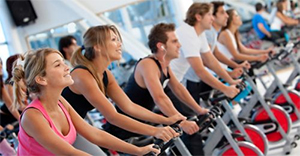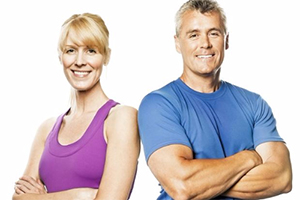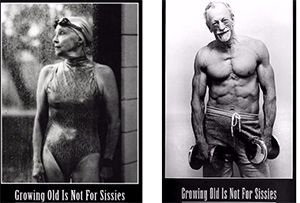Exercises for Each Decade.
When it comes to staying healthy and fit, there is no magic pill or potion. Every medication has its therapeutic dosing. And this is no different for exercise. You may not be able to exercise when you’re 65 the way you did when you were 20. Below is a basic guide of what to focus on in terms of exercise for each decade of your life.
Exercises for the Decades

The 20s
“Young and the Restless”
- Your body is so strong that you tend to abuse it
- Don’t get caught up in fad diets and trendy workouts
- Stick to the basics:
- Cardio, weight training and flexibility
- Weight training
- If you can do 12 repetitions, it’s too light…go heavier
- Cardio
- 150 minutes a week of moderate intensity
- Rx: 30 minutes of weight training followed by 30 minutes of cardio 3x a week, plus 45 to 60 minutes of straight cardio 3x a week. One day of rest.
- Tips:
- Push yourself to maximum performance

The 30s
“No Time and Always Tired”
- You don’t have much time so quality workouts are more important that quantity
- Difficult to balance, work, family…but don’t forget about YOU.
- Basal metabolic rate just dropped 2% from your 20s
- This means you need less calories to sustain yourself
- Weight doesn’t come off quite as easy
- Focus on total body exercises and circuit training
- Switch it up between heavy weights/low reps AND low weight/many reps
- One day of rest each week is critical
*Women*
- Pilates can be very effective post-partum to re-tighten and elongate the core and abs.

The 40s
“Where Are my Muscles”
- Gravity is always going to win
- Don’t have a mid-life body crisis
- Don’t starve yourself to get your abs back, work on strength training
- Workout your whole body 4 days/week for 30 minutes
- One day of rest is important
- Bent knee Pushups
- Squats or Stairs
- Planks
*Women*
- At this age, it is much easier to gain fat in the belly, arms and below the bra.
- Another decline in metabolism and change in body composition
- You need to make modifications to your eating habits and exercise plan to maintain a healthy weight

The 50s
“Get off the couch and get focused”
- Exercise at an intensity that lets you say a few words, but not chat
- Focus on higher reps and lower weight 12-15 reps
- Always stretch afterward.
- Years of computer/desk work will lead to the classes shoulder slump
- You MUST do resistance and weight training
- You can target your whole body in 15 minutes with some dumbbells you may have lying around
- Yoga, Tai Chi are important for balance
- The only way is slowly but surely.
- Start with half an hour twice a week.
- Then, as you increase in fitness and confidence, increase to three times a week.

The 60s
“No Pain, No Gain”
- Problems like arthritis, bad knees, and spinal stenosis become common.
- Walk whenever possible, and do daily balance exercises.
- 3 days a week of gentle cardio, weights and sustained stretching
- Lack of strength, while MAY BE a function of aging, is more likely due to LACK OF USE
- Jogging in a pool, swimming, or riding a stationary bicycle
- Resistance training is still important
- Stretching and balance are absolute musts

70s and Beyond
“Take Action. Your life depends on it!”
- Strength-building exercises are essential for people in their 70s and beyond
- Resistance training does not aggravate the joints as much
- Don’t exercise outside your comfort zone
- Annual check-ups with your doctor are important
- Be SMART about your fitness goals
- S- Specific
- M- Measurable
- A- Attainable
- R- Realistic
- T- Timely
Celebrate your successes– little ones and big ones



